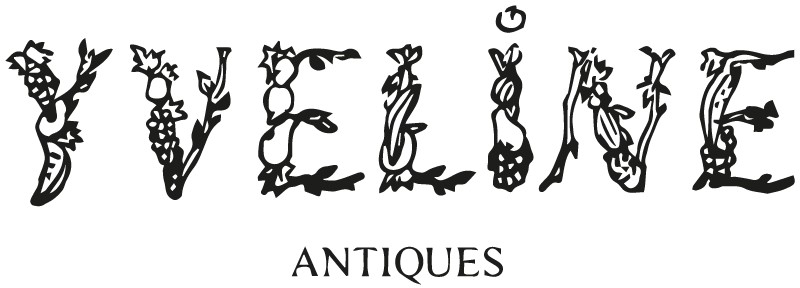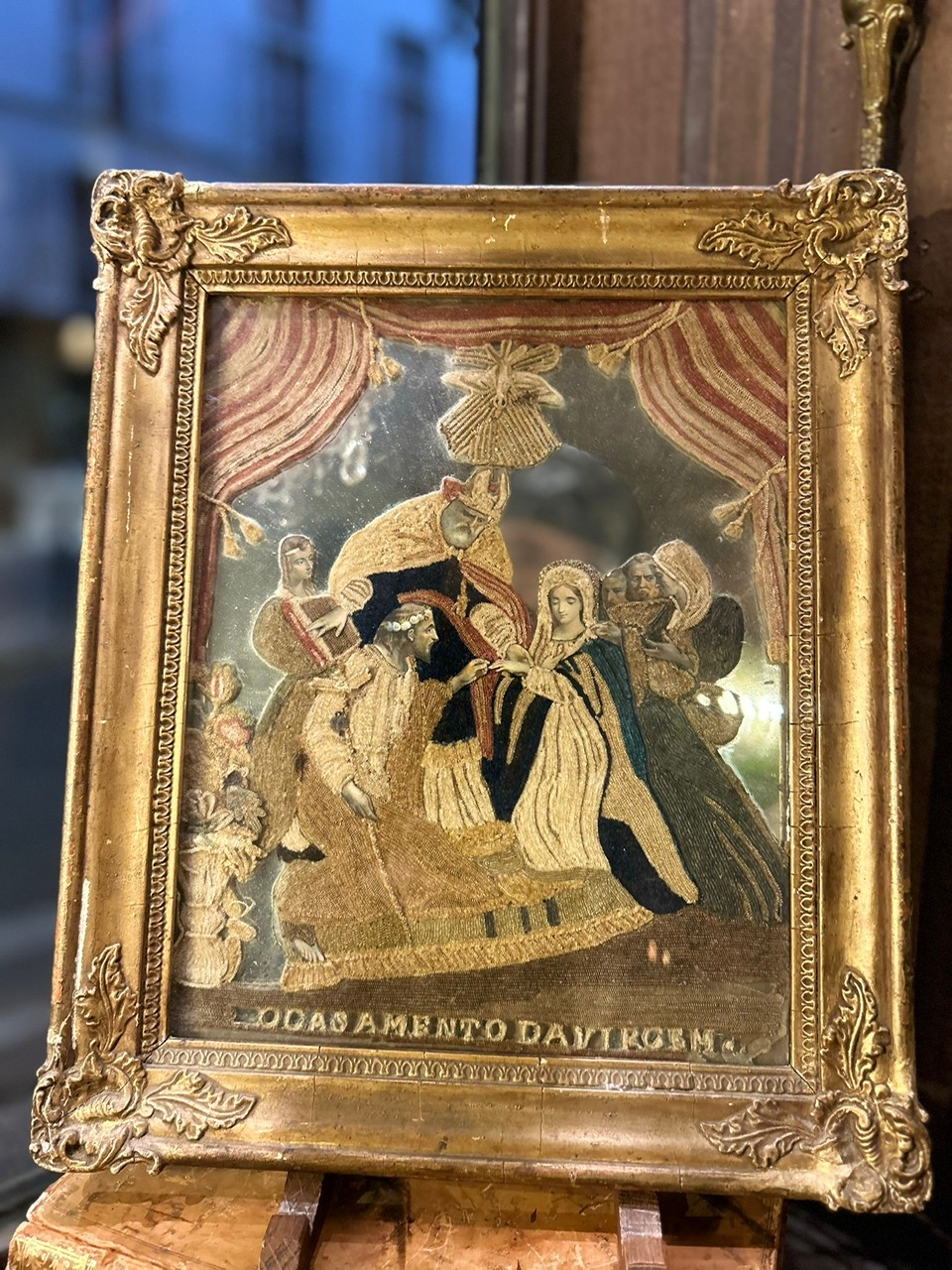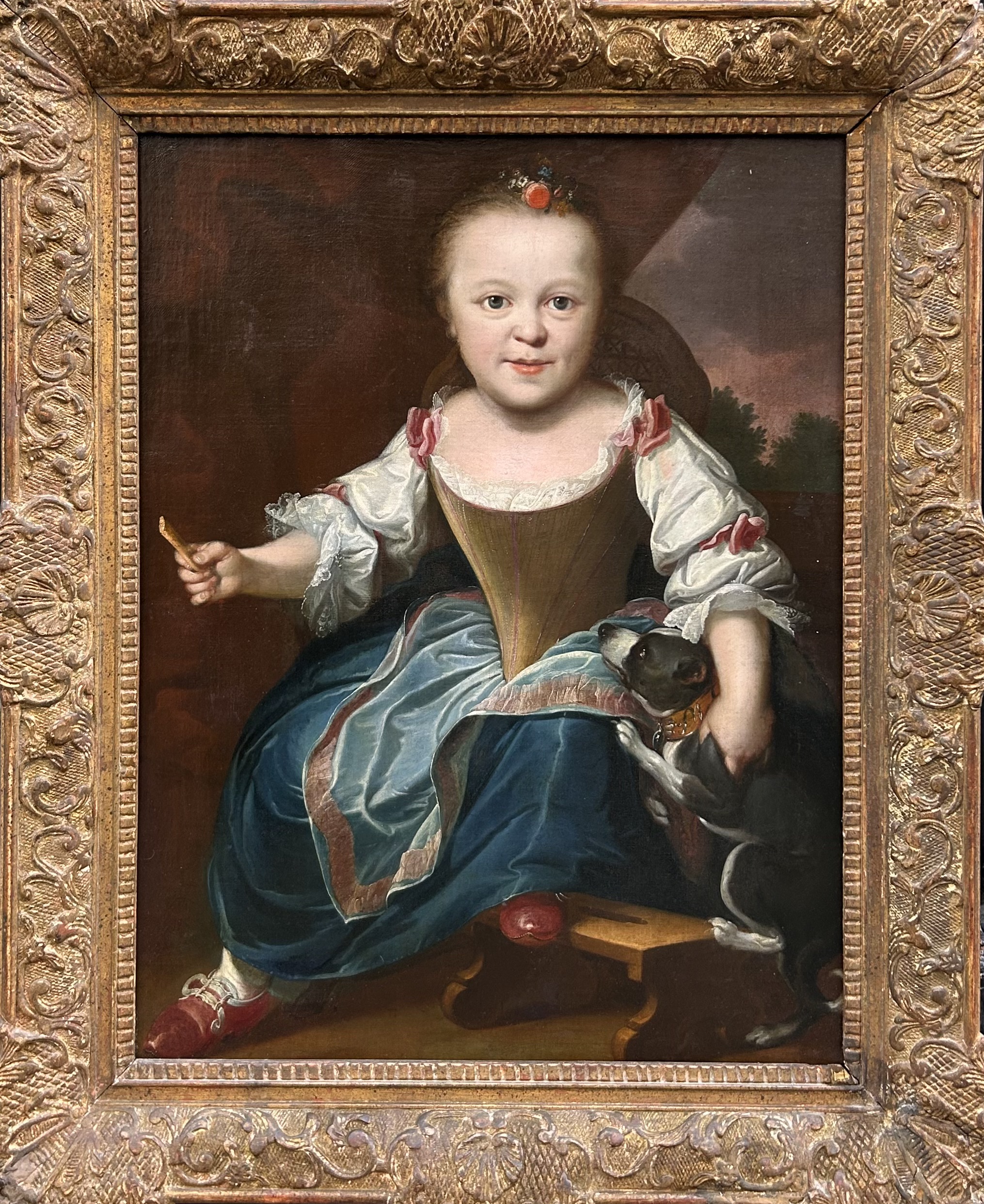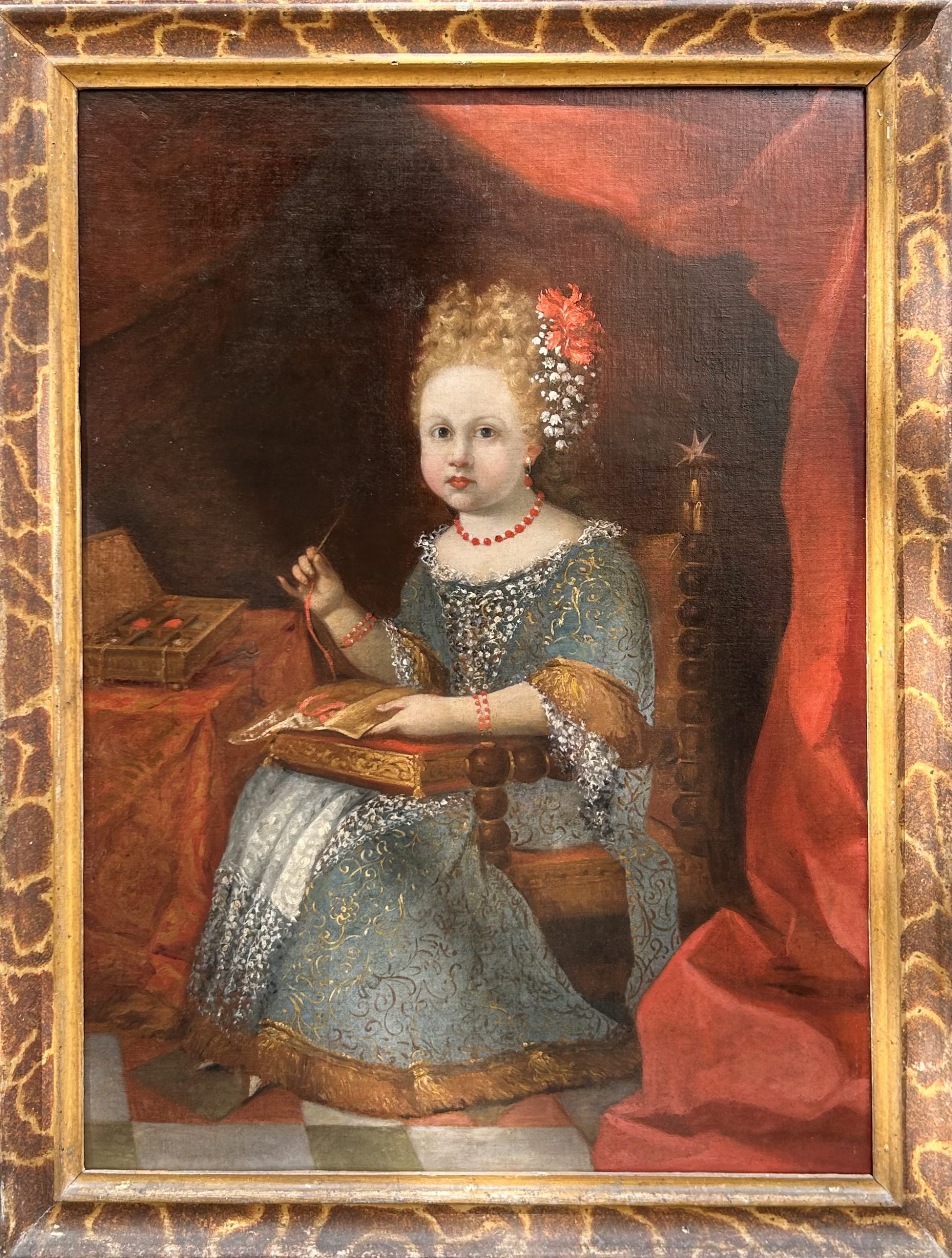Large oil on canvas depicting a little girl holding a goldfinch on a leash, watched by a spaniel, against a landscape background.
This painting corresponds to a type of child portrait created in aristocratic circles in the 18th century.
French or Dutch School
18th century
Oil on wood depicting a woman in front of a mirror applying a beauty mark, signed Henri Lafon and dated, original wood and stucco frame.
Henri LAFON (active in France in the second half of the 19th century).
19th century,
France
Embroidery on the back of the mirror depicts a religious marriage of the Virgin Mary and Saint Joseph.
Northern Italy or France
Late 18th century
Oil on canvas, portrait of a child playing with a dog.
Northern School
18th century
Oil on copper depicting the Holy Family Panciatichi – or Holy Family with the Infant Saint John, in a carved gilded wooden frame.
17th century
Tuscan school
She is wearing a dressing gown: an elegant indoor garment very fashionable at the time. This garment is inspired by French fashion. Her hairstyle, typical of the 1670s–1680s, adopts the “hurluberlu” style.
Oil on copper depicting the Holy Family Panciatichi – or Holy Family with the Child John, in a gilt carved wooden frame.
17th century
Tuscan School
Pair of oil paintings in mock ovals, young girl holding a bunch of grapes in front of a parrot and young girl riding near her horse, traces of signature and date lower right, later frames.
Flemish School
18th century
Oil on copper depicting the angel Raphael and Tobias with a large fish, the archangel Raphael being Tobias’s protective companion.
19th century
Italy
Oil on canvas depicting a young girl embroidering dressed in a richly worked dress and wearing coral beads.
Italy
18th century










